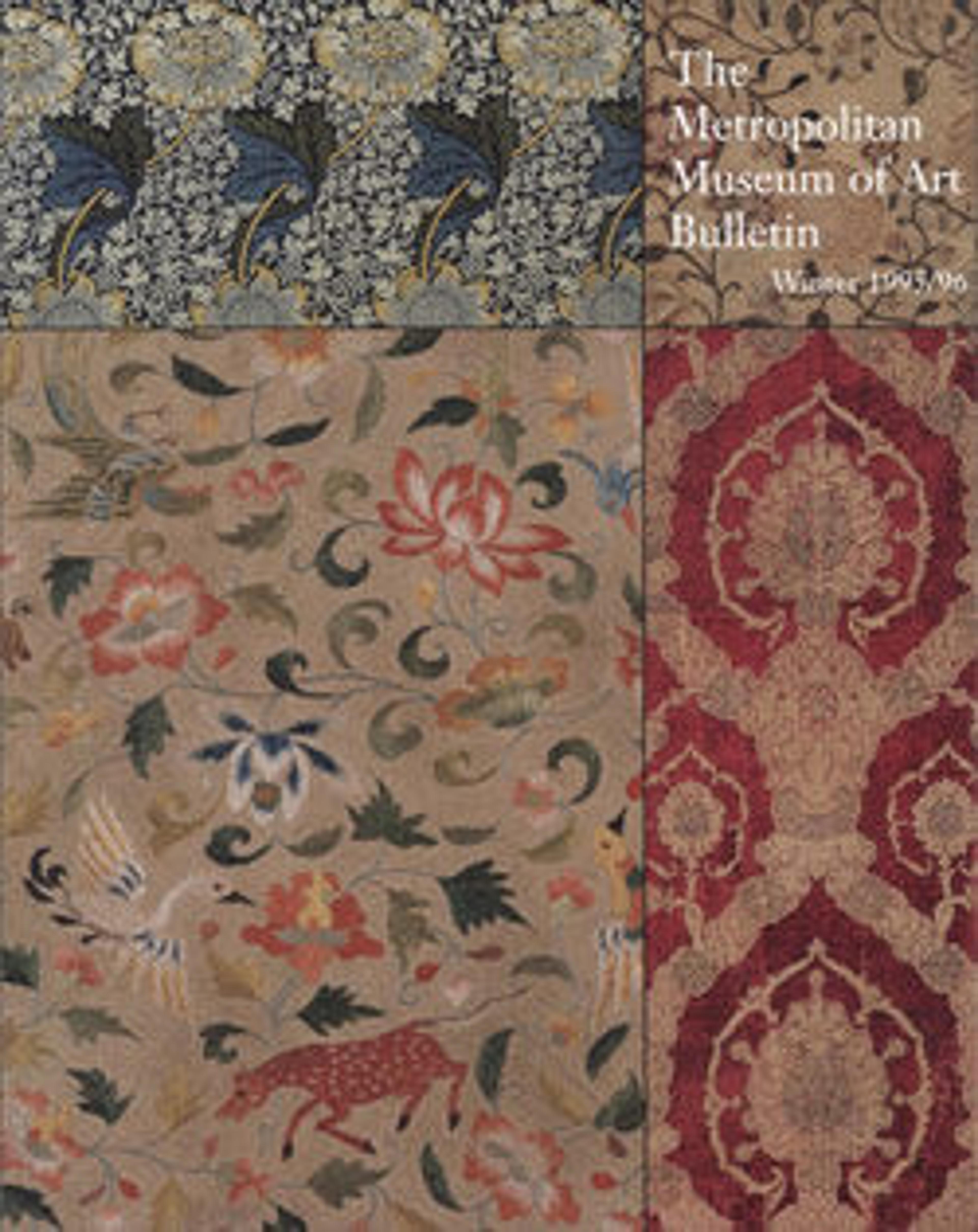Musical Party in a Garden
While there is a long tradition of exceptional professional embroidery in England, domestic needlework attained a high point in the seventeenth century, when it was a requisite skill of accomplished young women. In addition to clothing and accessories, mirror frames, writing boxes, table covers, and pictures were decorated with embroidery. Prints served as sources for figures, flowers, and animals, which were drawn onto the fabric and given to the embroideresses. Frequently depicted themes include Old Testament stories, political subjects, allegories, and scenes of daily life. Musical Garden Party presents activities at a country house. In a formal garden, ladies perform for an appreciative male audience. By using fine-gauge canvas and silk threads, the embroideress was able to capture many fashion details such as feathered hats, lace trimming, and the floral pattern of a gown. Facial features, however, are left unembroidered. The hovering putto with bow and arrow hints at impending romance.
Artwork Details
- Title:Musical Party in a Garden
- Date:1647
- Culture:British
- Medium:Canvas worked with silk thread; tent stitch
- Dimensions:Overall: 13 3/4 x 21 1/4 in. (34.9 x 54 cm)
- Classification:Textiles-Embroidered
- Credit Line:Gift of Irwin Untermyer, 1964
- Object Number:64.101.1314
- Curatorial Department: European Sculpture and Decorative Arts
More Artwork
Research Resources
The Met provides unparalleled resources for research and welcomes an international community of students and scholars. The Met's Open Access API is where creators and researchers can connect to the The Met collection. Open Access data and public domain images are available for unrestricted commercial and noncommercial use without permission or fee.
To request images under copyright and other restrictions, please use this Image Request form.
Feedback
We continue to research and examine historical and cultural context for objects in The Met collection. If you have comments or questions about this object record, please contact us using the form below. The Museum looks forward to receiving your comments.
